Are you looking for a way to generate recurring revenue online? How about creating a subscription site?
A subscription site is where you have products that customers can access by making payments on a regular basis, for example – every month. Many subscription offerings also have yearly options or for a fixed time period such as 3-6 months. It depends on the product or service offered and the nature of the business.
Subscription sites create tremendous opportunities to make a regular online income. They also offer other benefits. Let’s look at what they are.
- A subscription site protects your content or product and reduces uncredited downloads
- You can collect payments automatically
- It provides value to paying members by creating exclusivity
- You can automate all activities such as registration, onboarding, granting content access, and more.
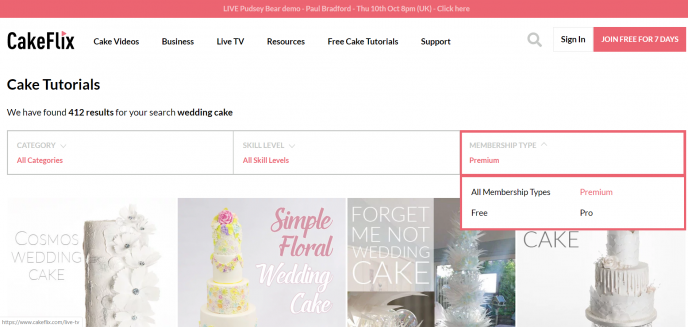
Membership site example – CakeFlix
Source
A subscription site is a powerful income-generating asset for your brand. In this post, we’re going to look at how to build a profitable business model– a subscription site – without needing intensive coding knowledge.
Ready to get started? Let’s dive in.
Start With an Idea
There are several approaches to coming up with a subscription business idea. You can look at the services or products you need in your own life. This will provide you with inspiration to help others in the same situation.
Do a study on other businesses and find ways to offer a better product. Use social media platforms like Twitter, Facebook, and review sites and note down complaints. You’ll identify a gap between what people want and what the business offers. Your product idea can fill in this gap and cater to people who need your solution.
There are other ways to find ideas: create surveys, ask friends on social media, and use keyword tools to find what people are looking for.
Google Analytics and other research tools make it’s easy to find out the specific problems that people face. You’ll be able to narrow down on unmet needs and the kind of solutions you can offer with a subscription site.
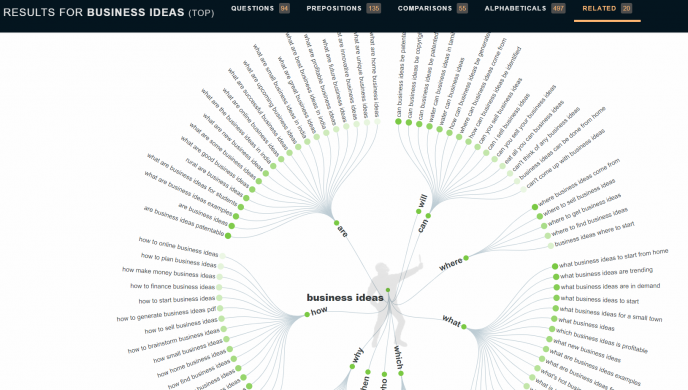
Source
Plan and Create Content
A subscription site is built on offering valuable content within its gates. Once you’ve fleshed out your business idea, you need to chart out and offer helpful content for the members of your subscription site.
There are different types of content you can offer, and your core business idea will largely shape the format you’ll use. Here are common format types that you use to build content:
- Videos – they are easy to create and highly engaging. They are also necessary if your site offers educational content such as teaching people to use specific software
- Course modules including articles, posts, and papers
- Checklists, guides, resources, worksheets, templates, and other printables
- Podcasts and audio files
- Access to communities, forums, and discussion boards
- SaaS and other product downloads
One of the most valuable ways to create content, engage users, and keep your members from leaving is to create a community.
People often need support or want to ask questions to their peers. You can offer access to community and forum discussions as a type of content. Discussions and user-generated content can be insightful sources of information that are valuable on their own account.
The best way to create a subscription site with community features is to use a WordPress plugin. MemberPress is a powerful plugin that will allow you to build a subscription site and a whole suite of features including forums.
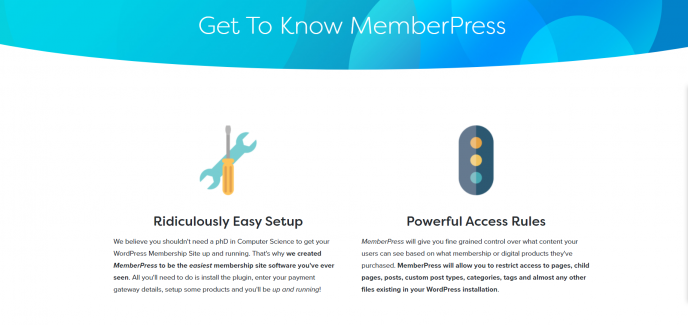
Set Up Your Membership Site
A membership site will provide you with the entire set of features you need to host your subscription business.
You’ll be able to automate registration, payment collection, content distribution and more to run your business smoothly. All it takes is installing the MemberPress platform and having at least one product ready.
Once you’ve activated your plugin, you just have to follow a few steps and you’ll have a live subscription business.
Set Up a Payment Gateway
The first key step is to set up your payment gateway to automatically collect payment from your users. Most membership plugins have integrations with major payment platforms such as Stripe, PayPal, and other major brands. Your plugin settings will allow you to easily create payment options for your customers.
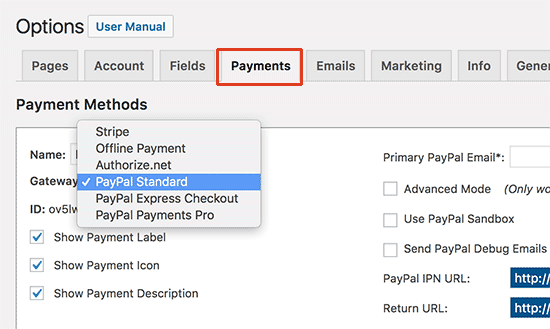
Setting up Payments on MemberPress
Create Membership Plans
Once your payment method is set up, you’re ready to proceed by creating membership plans. These are the subscription levels that will restrict content to different tiers of subscribers.
Setting up your membership plan will automatically grant access to specific content to users and launch the right email campaigns.
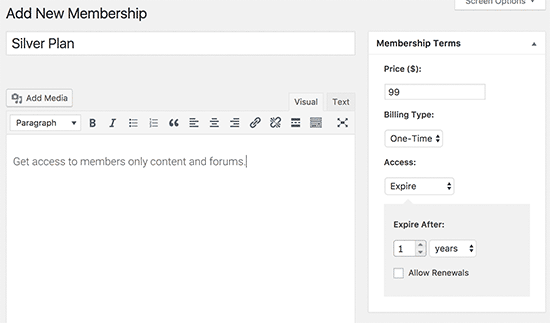
Creating Membership Plans
Add Rules
The next major step is to set up rules that will link subscription levels to your content. The MemberPress plugin allows you to create access based on any classification type such as tags, categories, custom posts, pages, and more.
Setting rules will help you specify which pages or what kind of content a user can access. Remember, you need to have your content in place to link access to these content options.
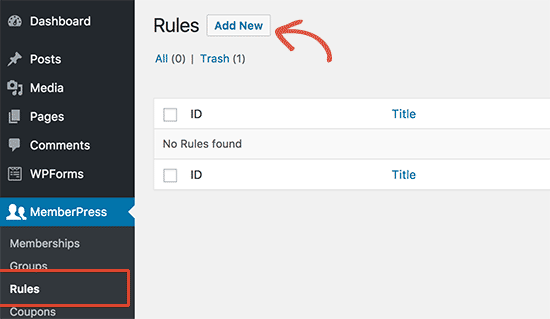
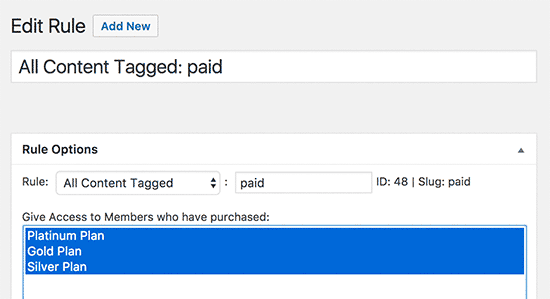
Add Rules to Each Plan
Market Your Website
You may have a great site and great content but if people don’t know about it, you’re not going to get customers.
You have to find ways to engage your users and show them the value of your offering. Here are several ideas you can use to boost sign-ups and get your subscription site going.
Offer a Trial Period: A trial period with free access to a limited portion of your content will give users a risk-free way to test your site. They’ll appreciate your willingness to share and you’ll get customers who will benefit from working with you.
Run a Giveaway Contest: A giveaway contest generates excitement and creates positive emotions in your customers. Giveaways easily get attention on social media and also boost conversions. As with a membership site, you can easily create giveaways by using a plugin like RafflePress. Setting up a giveaway will take minutes and will also create a buzz on social media.
Nurture Leads with Email Marketing: All online businesses need to have an email marketing strategy in place. It offers the best conversion rates and will help you build a relationship with your customers. There are email marketing tools that make it easy and also enable a greater deal of personalization.
Remember to segment your email list to personalize your email communication. Regular and relevant email messages will help nurture your leads into paying customers.
Build Fresh Content
To ensure that people subscribe to your site and don’t leave, it’s important to provide your members with fresh content.
We’ve already talked about how building a community is a great way to create content as you get user-generated material from your members. A membership community automatically creates engagement and keeps people coming back.
You can also repurpose existing content by changing their formats. For example, you can turn a video into a blog post or provide a transcript of a podcast as a lead magnet. There are many ways you can boost traffic without having to create new content.
It’s also essential to keep updating your content and to provide relevant material. You can create group events, live webinars, or guest interviews and posts to generate fresh material.
Fresh content, lively exchanges, and news and updates are all excellent ways to keep people subscribed.
It’s also helpful to ask for feedback and encourage users to suggest new ideas that you can use. Do this by creating polls on social media and sending surveys to your email list.
Make a Profitable Subscription Site for Your Brand
Building a subscription site gives you a reliable income and helps you provide a consistently good quality of service to your subscribers. You’ll be able to use automation to manage any number of customers from around the world.
By building a membership site, you’ll be able to create subscription plans and ensure that the content you’ve worked hard to build is well protected.
You now know the steps you need to take to create your subscription site. Get started and build one of your own!
—
Syed Balkhi is an award-winning entrepreneur and online marketing expert. He is the co-founder of OptinMonster, WPBeginner, MonsterInsights, and WPForms.